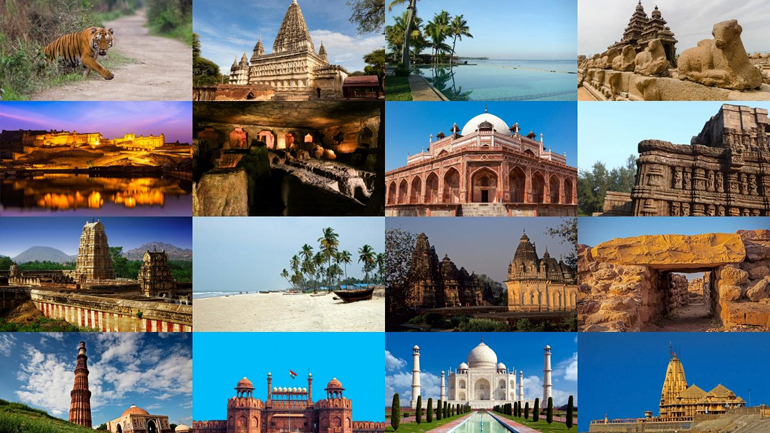Tourism seeing boom in the domestic sector
 As 2021 plagued by COVID-19 comes to a close, the domestic tourism sector in the state is seeing a boom after hitting the nadir during the last nearly two years owing to the pandemic but the increase in the incidence of Omicron has forced tour operators to keep their fingers crossed on international travel, leading tour operators here said.
As 2021 plagued by COVID-19 comes to a close, the domestic tourism sector in the state is seeing a boom after hitting the nadir during the last nearly two years owing to the pandemic but the increase in the incidence of Omicron has forced tour operators to keep their fingers crossed on international travel, leading tour operators here said.
In the city, tourism has got a filip after its famed Durga Puja was included in UNESCO’s list of ‘Intangible Cultural Heritage of Humanity’ and is expected to attract more foreign and domestic tourists, they said.
The village tourism sector operating in the eastern Himalayas and destinations in the north east was hit during the pandemic and many of those involved in it went back to their family agricultural activities, they said.
“It has been an uncertain journey through 2021. The situation was initially getting better but the second wave struck. It got much better afterwards and tourism grew. Now people have apprehensions about international travel (following the advent of Omicron),” Anil Punjabi, the eastern region chairman of the Travel Agents Federation of India said.
The domestic tourism sector did very well despite the downturn after the second wave of COVID-19 and with most of the people vaccinated hopes grew for unhindered international travel. There was some business also between the first and the second waves of COVID-19.
People went to Dubai for the IPL and the World Cup cricket matches, besides Maldives and Mauritius. USA and London had also opened up. “Then suddenly this new variant came in and it started playing in the minds of the people. Slowly new lockdowns are now coming up in international borders. We had a lot of bookings for the winter season,” Punjabi said expressing apprehensions about cancellations and last minute changes in travel plans.
He said the ratio of domestic and foreign travel is generally 60:40, but post the second wave of the pandemic it is 80 per cent for intra-country tourism and 20 per cent for international travel. “Domestic travel has picked up so much that it is difficult to offer airline seats or rooms to tourists,” he said.
Places like Gulmarg in Kashmir or Rajasthan and Gujarat along with many other states across the country are choc-a-bloc with tourists. “People are also going for long weekends in their own states, driving their own vehicles, apart from staycations which have also picked up during this period,” Punjabi said.
Travel operators are hoping for the situation to improve and that international scheduled passenger flights willl resume after January 31, 2022, he said.
The government has suspended international flights till that date.
Elaborating on international travel, Punjabi said Indian tourists form a big chunk of inflows to Thailand, Singapore, Hong Kong and far-eastern countries. “They want the borders to open subject to following the safety measures”.
Travel operator Arunesh Basu said that the inclusion of Durga Puja in the UNESCO list of ‘Intangible Cultural Heritage of Humanity’ will interest more foreign tourists and travellers from other states of the country to visit Kolkata, for which the nearly week-long festival has become an identity.
He said that the art work and themes of the community pujas across the metropolis, the variety of food, cultural shows and coming together of people of all ages have an attraction that cannot be ignored.
Raj Basu, convenor of the Association for Conservation of Tourism, said that travel operators could never imagine that the travel business could fall so drastically as it did in 2021, which he said was the worst period he has seen in tourism in the last three decades.
Now though there has been a boom of late, it has not translated into great business for travel agents in the region, he said.
There has been a perceptible change in the way tourists are planning their stay following the advent of the pandemic. “People are choosing not so crowded places in the villages and are staying at one place for a longer time instead of hopping to several destinations during one tour,” Basu told PTI.
Many home stay owners and transporters are developing contacts with the travelers and by using social media outlets and bookings are being done directly by many of them instead of going to tour operators, he said.
The villagers connected to tourism business, though affected by the pandemic did not face too much hardship as compared to their urban counterparts.
“What we found during this pandemic is the resilience of these people, who switched back to their age-old agricultural or other works that provided them a window to earn a living … The resilience of the village community ensured that they had no problems with regard to the basic needs of food, clothing and shelter,” he said.
The Association has over the last three decades introduced more than two lakh people to rural tourism business in the north-eastern states, eastern Nepal and northern Myanmar. Some of them are home stay owners, while others are tourist vehicle owners, guides or run restaurants.
The tour operators hoped that the worst is over and they can look forward to a better future if Omicron does not become very virulent.




